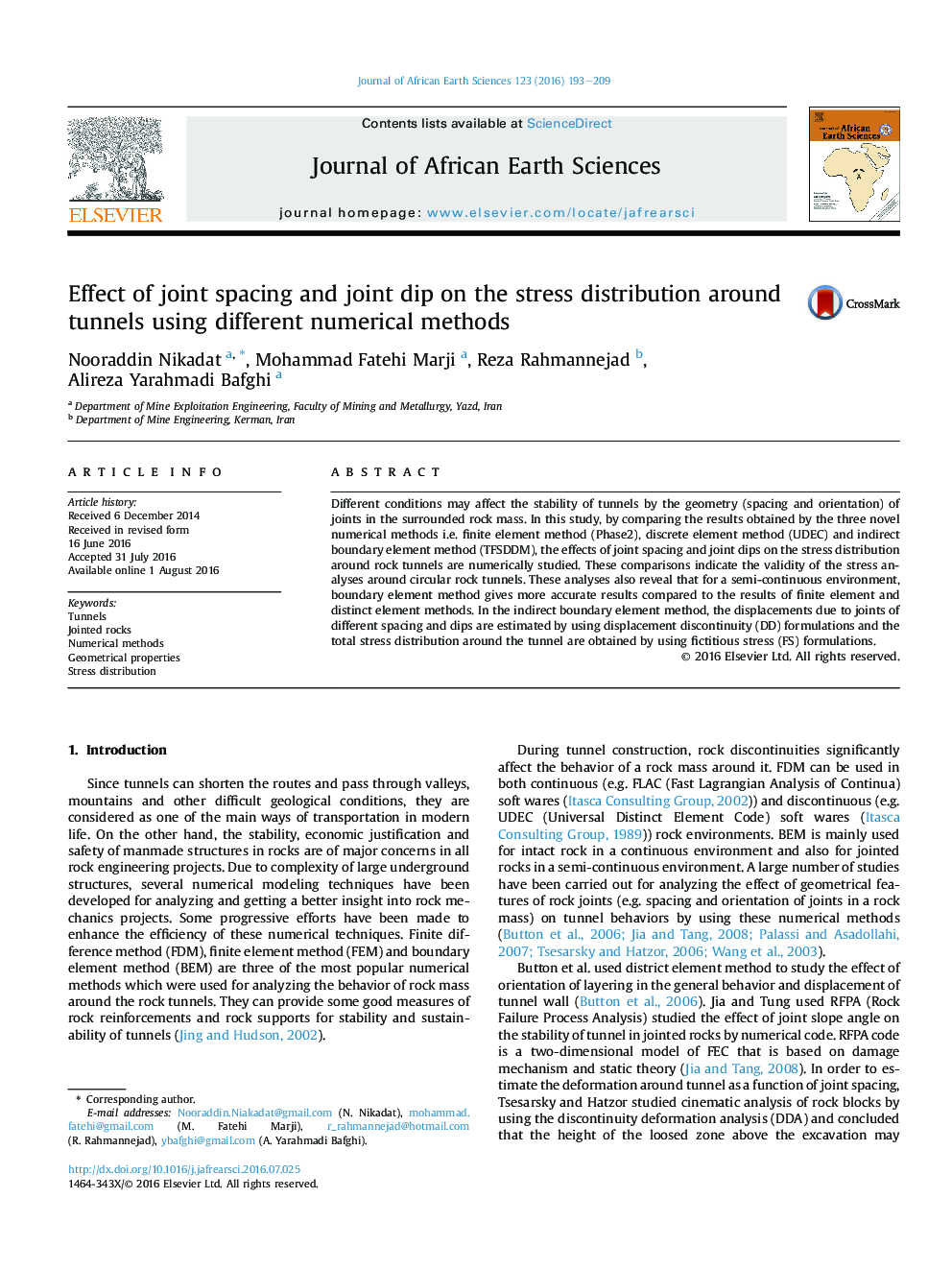| Article ID | Journal | Published Year | Pages | File Type |
|---|---|---|---|---|
| 4728178 | Journal of African Earth Sciences | 2016 | 17 Pages |
•Two methods of indirect boundary element were hybridized to achieve higher accuracy.•Joint and Coulomb elements were used in DDM to achieve higher accuracy.•The effect of geometric parameters on the stress distribution on the boundary of tunnel is investigated by using 3 numerical methods and results are compared.•Capability of each numerical method in analyzing the influence of geometrical parameters is investigated.
Different conditions may affect the stability of tunnels by the geometry (spacing and orientation) of joints in the surrounded rock mass. In this study, by comparing the results obtained by the three novel numerical methods i.e. finite element method (Phase2), discrete element method (UDEC) and indirect boundary element method (TFSDDM), the effects of joint spacing and joint dips on the stress distribution around rock tunnels are numerically studied. These comparisons indicate the validity of the stress analyses around circular rock tunnels. These analyses also reveal that for a semi-continuous environment, boundary element method gives more accurate results compared to the results of finite element and distinct element methods. In the indirect boundary element method, the displacements due to joints of different spacing and dips are estimated by using displacement discontinuity (DD) formulations and the total stress distribution around the tunnel are obtained by using fictitious stress (FS) formulations.
